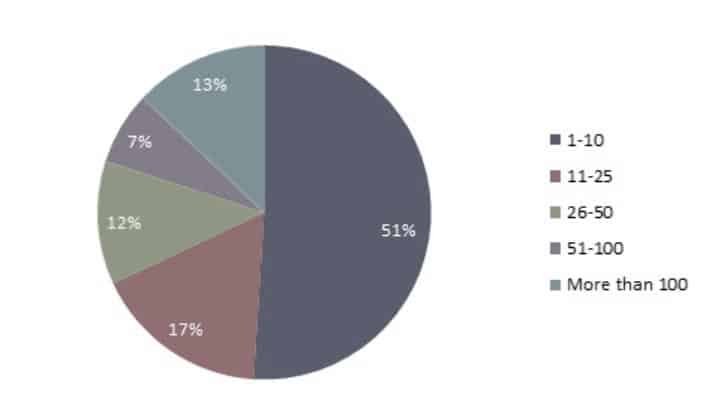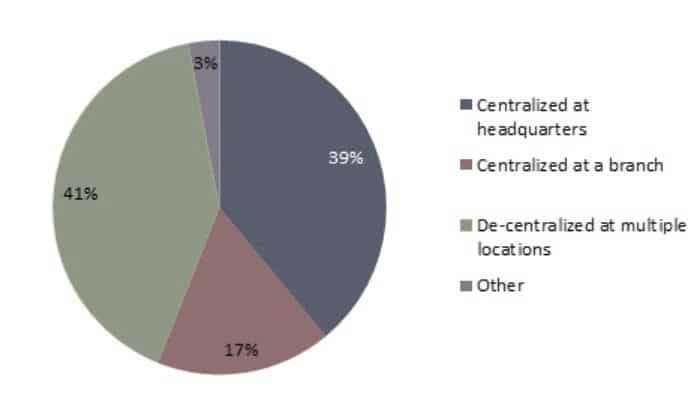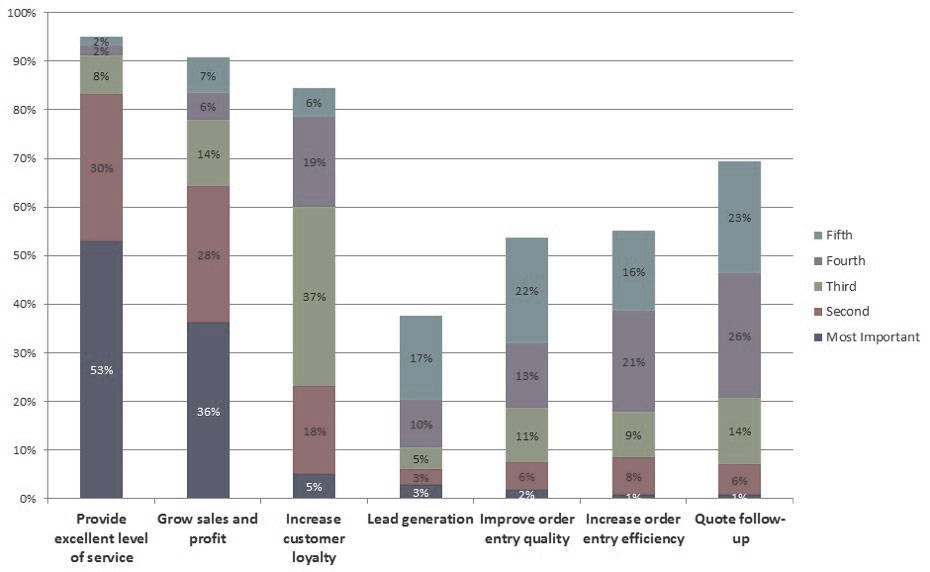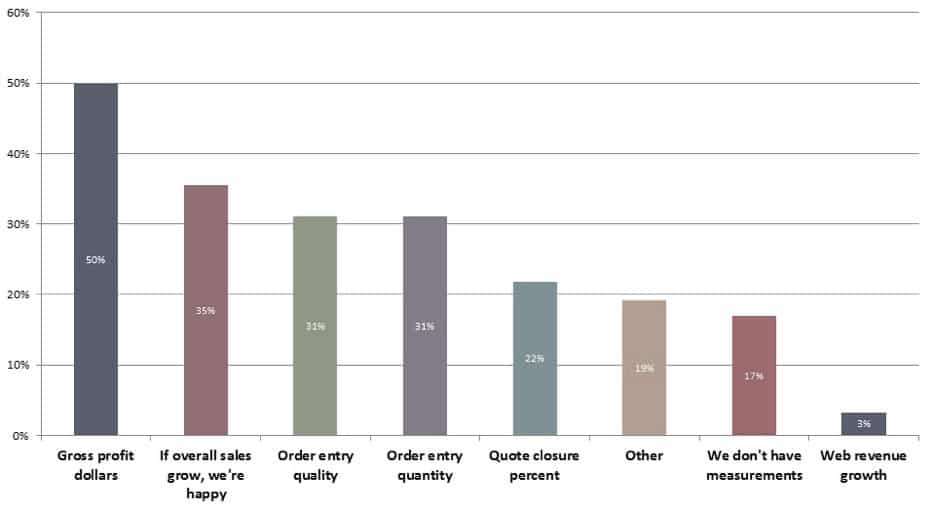Distribution Strategy Group, in partnership with Modern Distribution Management recently completed a survey about inside sales teams. The survey was designed to understand the key activities and the importance of these activities to companies’ inside sales teams, along with measurements and challenges.
The common theme throughout the survey results was the challenge to balance reactive and pro-active activities. In most cases, the reactive activities out-weighed the pro-active, resulting in very little outbound calling or lead generation activities for the blended inside sales teams. (The teams that were only pro-active did not experience this as much.) As in the 2014 survey, the struggle to try to get reactive individuals to be pro-active continues to be a challenge, primarily because the skill sets of these two groups are entirely different.
The term “inside sales” encompasses a variety of activities. Based on the survey results and the activities performed, the majority of respondents’ inside sales teams are performing various pre-sale activities including quoting and order entry, as well as after sale support activities; all which are primarily reactive functions.

In the chart above, 35% of respondents said that their inside sales teams were spending 26 – 50% of their time doing pre-sales support activities. Pro-active functions such as lead generation, quote follow-up and proactive outbound calling were not identified as key activities for inside sales. In fact, when respondents were asked to describe their inside sales teams as mostly pro-active or mostly reactive, 75% described their teams as mostly reactive.
The majority of respondents to the survey were distributors (69%) vs. manufacturers (21%), and more than half of the respondents (53%) had 1-10 branches or stores within their company.

The inside sales teams were organized in two key ways: centralized or de-centralized. 56% of the teams were centralized at either headquarters or a branch, while 41% were de-centralized among various locations. The preference for centralization was to enable consistent training, coaching and a high level of team support, while the pluses for de-centralization included the ability to tap into local sales talent, and better geographic team support. Some of the challenges with de-centralization included lack of consistent training and processes utilization.

The respondents were asked to rank the importance of various functions that related to profitability and other inside sales activities. 53% of respondents listed providing an excellent level of service as the single most important activity for inside sales. This aligns with the reactive activities and skill profile sets cited by the respondents of the survey. The second most important activity was to grow sales and profit (36%). An excellent customer experience will sustain wallet share, but won’t always help to grow incremental sales. This typically requires a more pro-active approach.

When asked about how their inside sales teams were measured, the respondent answers were varied.

Measuring gross profit dollars along with specific order entry quality and quantity measurements were most cited, while 17% of respondents didn’t have any measurement at all! Measurement is key to inside sales; this group is in constant contact with customers and should have some form of measurement even if it is as simple as a twice monthly formal contact monitor session to ensure a quality experience is occuring. It is important to balance the reactive measurements with the pro-active measurements, which is a challenge, if the inside team is primarily reactive.
When asked about what additional training respondents wanted to see for their inside sales teams, 73% of respondents wanted their teams to have more sales training. Again, this is where management expectations are in conflict. The majority of activites are reactive (primarily customer service related) yet, management wants more sales training. This is in direct conflict with skill sets of a reactive individual; they are not likely to excel in sales activities.
58% of respondents wanted training on handling difficult situations and 55% wanted to see additional technical training.
The most effective avenues for inside sales training were informal coaching sessions (57%), team members doing on the job training (56%) and formal training sessions with their manager (56%). Webinar and on-line training options were not as popular at 26%.
When asked how effective respondents felt their inside sales teams were, 62% felt that their teams were very effective or effective. 36% felt their teams were somewhat effective, while 3% felt their team was not effective at all. This is a reflection of the general desire of respondents to have their teams be more sales oriented. In fact, when asked what the biggest challenge for the inside sales team was, more than 50% of respondents cited lack of pro-activity and a lack of time to perform sales activities.
Conclusion
When looking at the consolidated results of the survey, there were dichotomies in the answers given. One one hand, the desire to be reactive and to provide an excellent customer experience was combined with the desire to be more sales oriented. The skill sets of an individual who is capable of providing an excellent reactive customer experience is the polar opposite of the individual who excels in selling.
Managers need to understand that to expect a reactive inside customer service person to be an excellent sales person is not realistic. It is realistic however, to train inside sales people to exploit the inbound transaction through cross-selling. One of the main complaints that distributors have is that customers don’t know the breadth of their product lines. Oftentimes, customers will think about their distributor in a very narrow way and once they understand the additional product lines their distributor carries, additional sales opportunities will open up. The inside sales rep, through their relationships and contact with customers can be key avenue to get customers to understand product breadth.
If companies want to increase sales in a more pro-active way, they should consider creating a separate group of individuals (or even just one person) who is responsible for growing customer sales and generating leads on a strictly pro-active basis. To expect a customer service oriented inside sales representative to excel at sales is just not realistic.
Debbie Paul is Partner at Distribution Strategy Group. Debbie helps distributors identify and communicate their value so they can better serve and sell to their customers. At Newark Electronics, she oversaw the growth of small- to medium-sized high-potential accounts with results of over 10% growth in the first year, continuing in subsequent years at a rate of 15-20%. Ready to tap the full potential of your customer base? Contact Debbie at dpaul@distributionstrategy.com.
